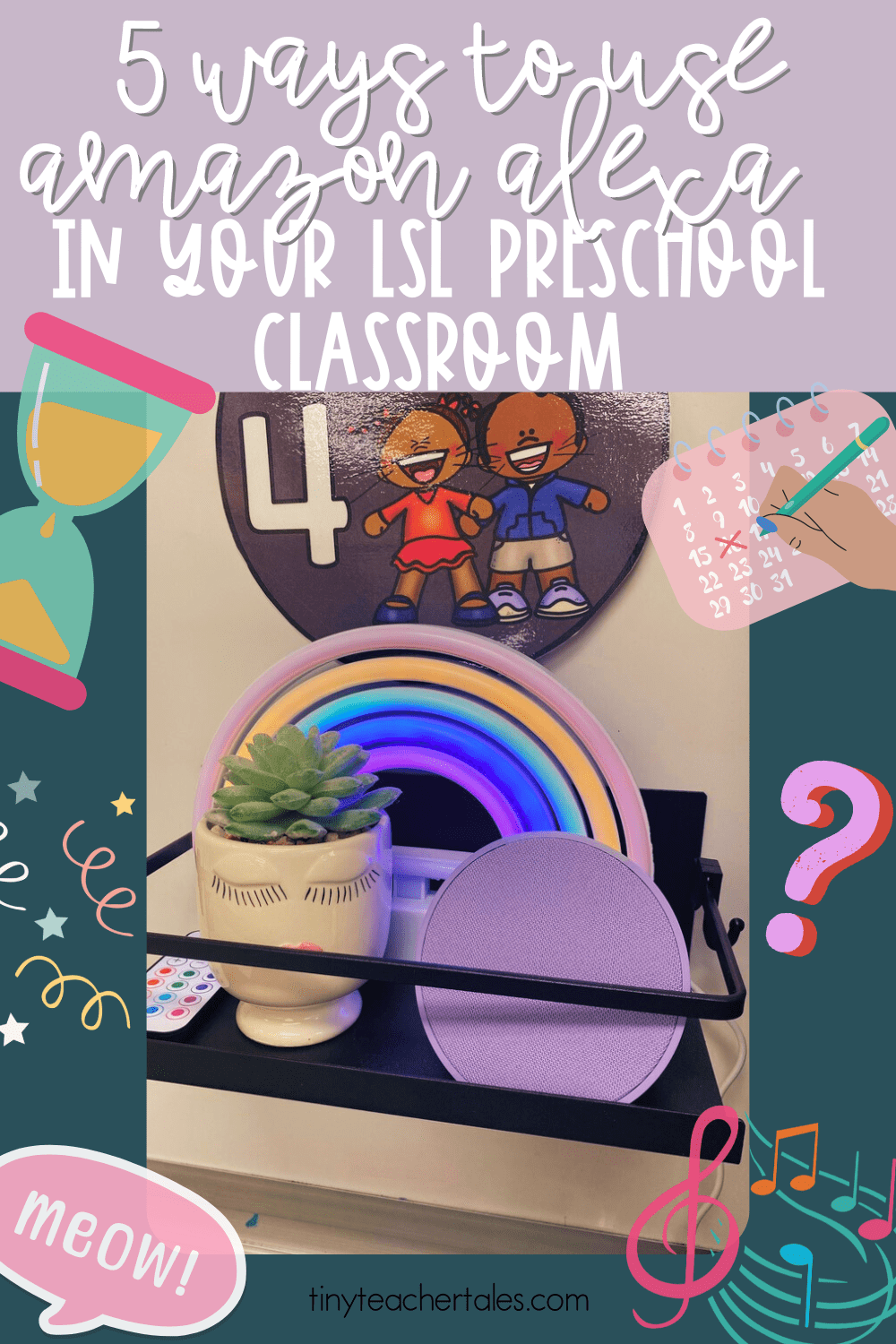As a teacher in a preschool setting focused on developing listening and spoken language skills in deaf or hard-of-hearing children, you understand the importance of creating a supportive and engaging learning environment. Using an Amazon Alexa device in your LSL preschool classroom can be a valuable tool to assist in achieving your goals. I have the Echo Pop and love how small it is, yet provides a loud enough sound for the classroom. Here are five innovative ways to leverage Alexa’s capabilities to enhance listening and spoken language education in your classroom!
This post may contain affiliate links, which means I may receive a commission, at no extra cost to you, if you make a purchase through a link. Please see my full disclosure for further information.

Auditory Skill Building🐱
Use Alexa to develop auditory skills by playing a variety of noises, such as nature sounds, musical instruments, or everyday noises. Encourage your students to identify and describe the sounds they hear. Gradually increase the complexity of the sounds as their listening abilities improve. This activity helps train their auditory perception and recognition skills while fostering language development. An example of a simple exercise would be to play with animal noises like a cat, dog, farm animals, etc. The student would listen to the animal sound being played and then select an image of the animal they think would make that noise. They can also tell you what they think it is instead of using pictures.
Music and Movement Activities🎶
Engage your preschoolers in music and movement activities using Alexa’s music streaming capabilities. Play songs that encourage dancing, clapping, and movement, helping children develop gross motor skills and a sense of rhythm. You can also use Alexa to play calming music during relaxation or use it for yoga. Utilizing an Alexa device during your music time provides your students with a fully auditory experience!
Special Reminders and Celebrations📆
Mark special days or achievements with Alexa. Use Alexa during your calendar time to add an interactive component. You can program it to announce birthdays, celebrate special achievements, or remind the class about upcoming events like field trips or holidays.
Daily Schedule and Transitions🧹
Create a routine-based schedule with Alexa’s help. Set reminders for transitions between activities like playtime, snack time, and story time. For instance, you can have Alexa set a timer to go off to smoothly guide children from one activity to the next. You can also play a cleanup song to let your students know that it is time to clean up and transition to the next activity.
Educational Quizzes and Trivia❓
Turn learning into a game with educational quizzes and trivia sessions. Alexa can be a quizmaster, asking age-appropriate questions related to letters, numbers, shapes, colors, animals, and more. Students can take turns answering questions, promoting active participation, and reinforcing key concepts in a playful manner.
Tips for Successful Integration
- Customized Skills: Explore Alexa’s available skills to find ones that align with your classroom goals. Some skills are explicitly designed for language learning and auditory training.
- Structured Activities: Design activities that align with your curriculum objectives. Alexa should be integrated as a tool to enhance your teaching strategies, not as a standalone activity.
- Foster Conversations: Encourage your students to interact with Alexa in complete sentences, promoting conversational skills and proper language usage.
By creatively incorporating Amazon Alexa into your LSL preschool classroom, you can offer your students new and exciting opportunities to engage with language and sound. With careful planning and thoughtful implementation, Alexa can become a valuable companion in your mission to empower young learners with listening and spoken language skills!
